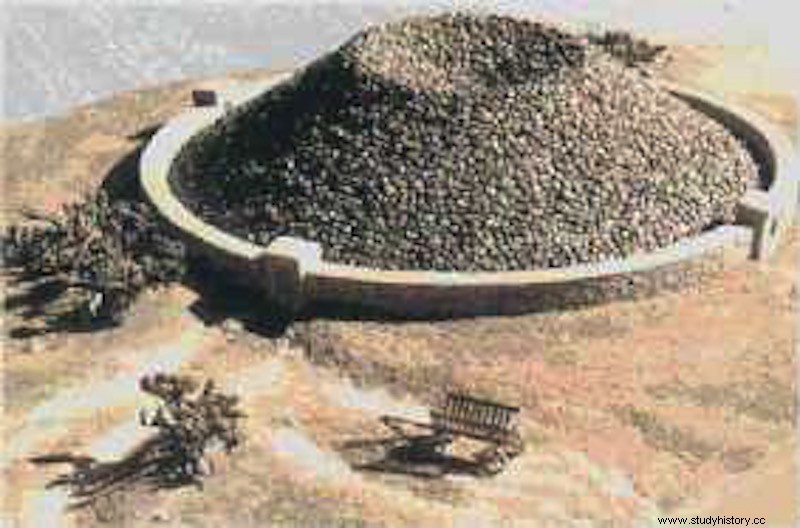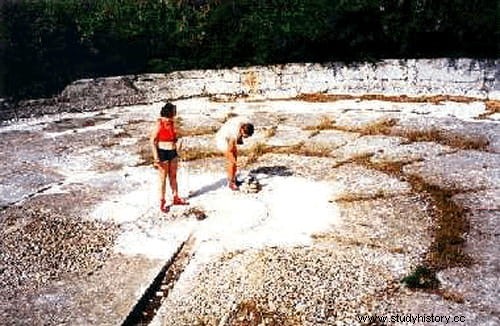Devices that produce drinking water from condensation are common today. The technology is simple and probably very old, although it is not really known exactly if it was already used in ancient times. An archaeological discovery made in 1900 led its author to think so, and in his attempt to replicate the system he laid the foundations for modern condensing technology. Although everything was the result of an error of interpretation.
Friedrich Zibold he was a Russian engineer who worked as a forest ranger in the area of the ancient Greek city of Feodosia (present-day Feodosia) on the Black Sea coast of Crimea. One day in 1900, while clearing a wooded area near the town, he discovered 13 large cone-shaped piles of stones . Each one was about 10 meters high and covered an area of about 900 square meters. Along with them he found fragments of terracotta pipes about 7 centimeters in diameter. These pipes started from the stone piles and extended to different wells and fountains already inside the city.
Based on his engineering training, and without the archaeological knowledge or means to examine the find, Zibold concluded that these must be condensers that produced water from the air, water that was then transported to the city via pipes. According to his calculations, each of the 13 condensers would produce about 55,400 liters of water per day, more than enough to supply the needs of ancient Feodosia.

To prove his hypothesis he built his own capacitor at the top of Mount Tepe-Oba (228 meters high), following the model of those discovered. His condenser was 6 meters high and had a diameter of 8 meters at its top. It was surrounded by a 1 meter high and 20 meter wide wall that created a bowl-shaped area where the water would collect. To build it he used stones extracted from the coast.
The structure was put into operation in 1912, and just as Zibold had predicted it worked. Every day it produced 360 liters of water. Although the production was much lower than what he had estimated for the structures discovered in the forest (55,400 liters per day), Zibold considered that his theory was confirmed and formed the basis for later developments of air wells, such as the famous Achille Knapen condenser built in 1930 in Trans-en-Provence, France, and by extension all subsequent technology thereon.

Zibold's condenser was operational for three years, until 1915, when the appearance of leaks in the base forced the cancellation of the experiment, which was left abandoned until rediscovered in 1993.
But what Zibold had identified in his day as air wells for water production in Theodosia were not such. In reality, they were funerary mounds built between the 5th and 4th centuries BC. The terracotta pipes were much later, from medieval times, and had nothing to do with the burial mounds (although their function remains unknown to this day).
Furthermore, later studies showed that the performance of capacitors decreased with increasing mass of structures, because heat was not removed quickly enough. As luck would have it, Zibold used stones (beach pebbles) for its construction, shaped in such a way that they allowed minimal thermal contact, creating thousands of small spaces that hot air could pass through. If those stones had not been used, the condenser would never have worked.
